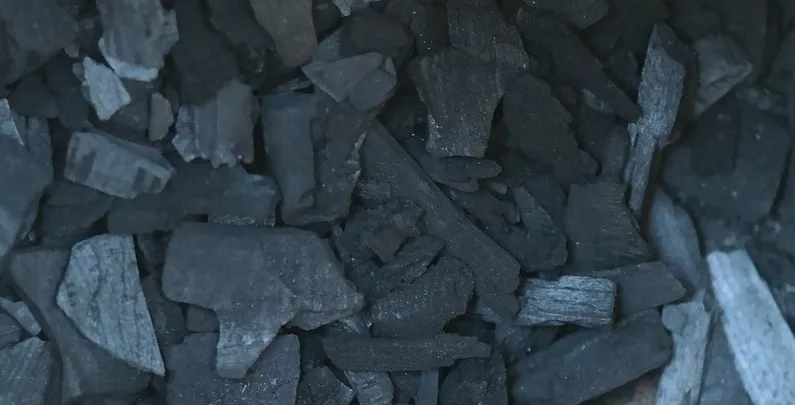Every day, we are bombarded with toxins from environmental pollutants, preservatives, pesticides, heavy metals, industrial waste, and more. From the food we eat to the air we breath, we are faced with toxins that our body must constantly work to neutralize, transform, or get rid of before they can cause damage or interfere with normal functioning. Over time, our bodies may begin to feel the strain.
“Detox,” also known as a “body cleanse,” has become a new trend or popular method of helping to remove toxins from the body. The increased popularity of these cleanses and the number of unhealthy methods and products available have given detox a bad reputation, but, while these detoxification methods cannot and do not replace the body’s own natural detoxification process, they can help, if done with the right foods or products, reduce the strain on the body by supporting the organs of elimination and giving the body what it needs to perform optimally.
A product that has gained a recent surge in interest for detoxification is activated charcoal.
Activated charcoal, also known as activated carbon, is a fine black powder that is odourless, tasteless (or almost tasteless), and highly adsorbent.
Adsorbent is not the same as absorbent. Absorption refers to when a substance, or molecules of a substance, are diffused or dissolved into a liquid or solid. The substance is then uniformly distributed throughout the bulk of the absorbent material. Adsorption, on the other hand, occurs when the molecules are attracted to and retained on the surface of a liquid or solid. They do not penetrate into the bulk of the substance.
Activated carbon possesses an expanded surface area with millions of tiny pores. This porous surface has a negative electric charge that attracts positively charged chemicals, which includes many toxins and gases, and causes them to bond with it. When certain chemicals pass next to the surface of the carbon particles, they are attracted to the carbon and attach to the surface. Substances that are not attracted to the carbon will pass through.
It can trap a variety of substances, including most organic chemicals, some inorganic chemicals, drugs, pesticides, mercury, fertilizer, and bleach. It is is estimated to reduce adsorption of poisonous substances up to 60%, and can bind to as much as 100 times its own weight.
Its ability to trap toxins and various substances has given it a prominent role in numerous applications, from toxic soil cleanup and air filters for gas masks, filter masks, and air compressors to water purification, metal extraction, and medicine. In medicine, it is used in liver and kidney dialysis machines, laser surgery, and in emergency toxin removals in the case of accidental or purposeful overdose of many pharmaceutical drugs and medications.
There are over 150 different specialized activated carbons with different properties for multiple applications (https://www.buyactivatedcharcoal.com/what_is_activated_charcoal) and the base material and activation process used all have an influence on its overall characteristics.
The process of making the activated carbon begins with the starting material; the charcoal. The starting material is a source of carbon, which can include wood, debris, sawdust/saw chip, coconut shells, bamboo, peat, petroleum coke or coal that has been subjected to high temperatures in an enclosed space without air. This charcoal is then activated by either a steam or chemical activation process.
Steam activation involves subjecting the charcoal to very high temperatures in the presence of oxidizing gases such as CO2 or steam. This erodes the carbon’s internal surfaces and produces a network of smaller pores, increasing the surface area available for adsorption. After cooling, the now activated charcoal may then be either water washed to remove soluble ash content, or acid washed to remove acid-soluble ash content and then water washed again to remove any trace of the acid solution (https://www.buyactivatedcharcoal.com/how_to_make_activated_charcoal).
Chemical activation involves using a chemical solution, which can include phosphoric acid, potassium hydroxide, zinc chloride, calcium chloride, or sodium hydroxide, to erode the carbon’s surface. The raw starting material is submerged into the chemical solution, reheated to enhance the chemical erosion, and then goes through a washing cycle to remove the acid. This process uses less heat and is quicker than gas or steam activation. For that reason, it tends to be the preferred method. However, some of the trace elements from the chemical solution may adsorb into the carbon, resulting in chemical residue such as zinc in the finished product.
For health applications or for purifying gases and vapors, coconut shell activated charcoal is often recommended due to their smaller pore size and high total pore volume. These properties mean they have an increased access to surface area and can adsorb smaller particles at a faster rate. Coconut shell activated charcoal is also more likely to be steam activated, with less chance of chemical residue or contamination. For any type of health application, you want to look for “food-grade” activated carbon.
In the human body, activated charcoal works by binding to chemicals in the digestive tract, including the entire length of the stomach and small and large intestines, and inhibiting their absorption. They are then excreted (eliminated) during bowel movements.
In the next blog in this two-part series, we will look into common health applications of activated charcoal.


Leave a Reply
You must be logged in to post a comment.